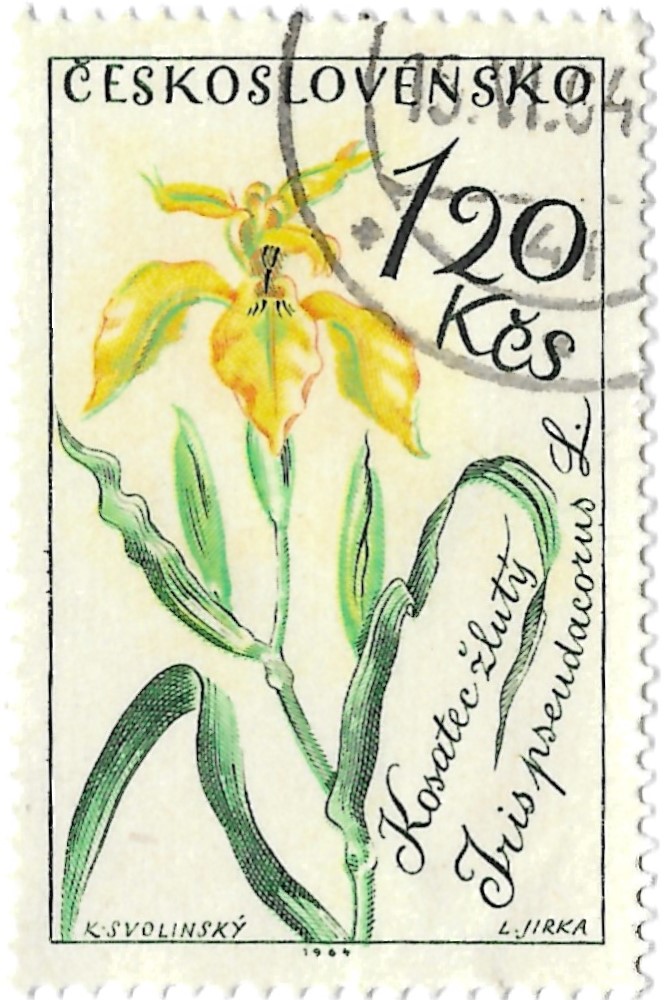Czechoslovakia Yellow Iris Stamp Information
- Czechoslovakia
- 1964
- Multicolor
- Commemorative
- Face Value: 1.20 Kčs
This postage stamp issued by Czechoslovakia in 1964 and depicts a yellow iris (Iris pseudacorus). The stamp was part of a series of stamps that featured different wildflowers of Czechoslovakia. The value of the stamp is 1.20Kč.
Facts about the Yellow Iris
The Yellow iris, scientifically known as Iris pseudacorus, is a species of flowering plant belonging to the family Iridaceae. It is commonly referred to as the yellow flag iris or water flag due to its distinctive yellow flowers and its preference for wetland habitats. Here are some key characteristics and information about the Yellow iris:
Appearance:
The Yellow iris is a perennial herbaceous plant with attractive bright yellow flowers. The flowers are large and showy, typically having six petal-like tepals, with three upright petals (called standards) and three drooping petals (called falls) that have dark yellow or brownish markings. The leaves are long, sword-shaped, and green, reaching up to 3 feet (1 meter) in height.
Native Range:
The species is native to Europe, Western Asia, and North Africa. However, due to its ornamental qualities, it has been introduced to other parts of the world and can now be found in various regions outside its original range.
Habitat:
Yellow iris thrives in aquatic or semiaquatic environments such as marshes, swamps, ditches, riverbanks, and the edges of ponds and lakes. It prefers standing water, but can also tolerate slightly brackish conditions.
Invasive Species:
While the Yellow iris is admired for its striking appearance, it is considered invasive in some regions, particularly in North America and parts of Australia. Its ability to spread quickly and outcompete native vegetation can disrupt local ecosystems and reduce biodiversity.
Wildlife Attraction:
The Yellow iris is known to attract various wildlife, including pollinators like bees and butterflies. Its presence near water bodies can also provide habitat and shelter for small aquatic animals.
Toxicity:
The plant contains toxins that can be harmful if ingested. It is not suitable for consumption by humans or animals.
Cultivation:
In garden settings, the Yellow iris can be cultivated in areas with moist soil or near water features. However, given its invasive nature in some regions, it is essential to check local regulations before planting it in natural or semi-natural habitats.
Uses:
Historically, certain parts of the Yellow iris were used for medicinal purposes, though this practice is not recommended due to its toxicity. The plant’s roots were also used to produce a yellow dye in some cultures.
Growing Yellow Iris
It’s important to note that if you encounter the Yellow iris in the wild or wish to grow it in your garden, exercise caution to prevent its spread to non-native environments where it could become invasive. If you’re considering planting it, it’s best to consult local gardening experts or authorities to ensure it is appropriate for your specific area.
